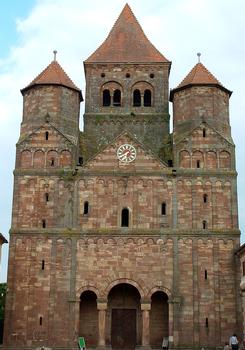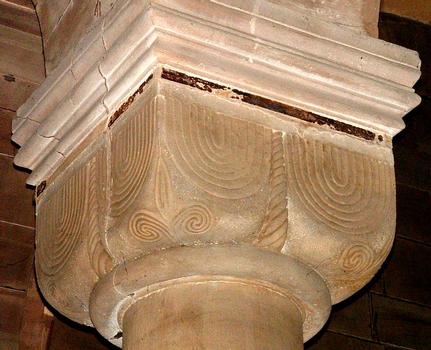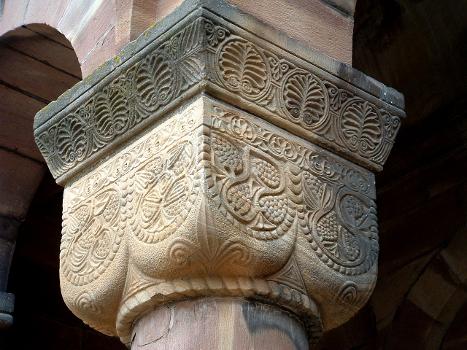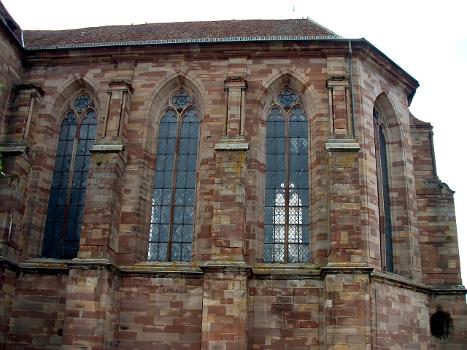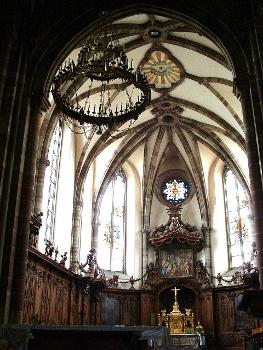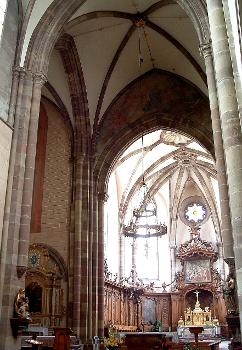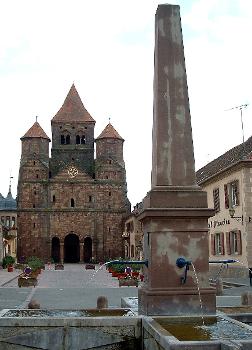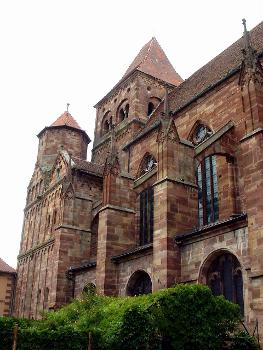General Information
| Beginning of works: | 11th century |
|---|---|
| Completion: | 18th century |
| Status: | in use |
Project Type
| Architectural style: |
Romanesque Gothic |
|---|---|
| Material: |
Masonry structure |
| Structure: |
Rib vault |
| Function / usage: |
original use: Monastery current use: Parish church |
Awards and Distinctions
| 1840 |
for registered users |
|---|
Location
| Location: |
Marmoutier, Bas-Rhin (67), Grand-Est, France |
|---|---|
| Coordinates: | 48° 41' 26.32" N 7° 22' 57.21" E |
Technical Information
There currently is no technical data available.
Chronology
| 827 | A fire destroys the monastery. |
|---|
Excerpt from Wikipedia
Marmoutier Abbey, otherwise Maursmünster Abbey, was a Benedictine monastery in the commune of Marmoutier in Alsace. The former abbey church now serves as the village's parish church.
History
The first foundation here, either around 590, or by Saint Leobard (d. here in about 680) in 659, was a community of Irish monks under the Rule of St. Columbanus. Then known as Aquileia, after the town in Italy, it was one of the Merovingian abbeys and a Reichsabtei.
In 728 century Saint Pirmin reformed the Columban monasteries in Alsace, including this one, introducing to them the Rule of St. Benedict. The first abbot under the new rule was Maurus, from whom the place took the name of Maursmünster in German, of which Marmoutier is the French version.
After two centuries of restriction and loss of income, the abbey, under Abbot Meinhard and his successors in the 12th century, enjoyed a long period of growth and prosperity, including the consolidation of the large territory. In the 12th century the abbey church of St. Stephen's was built, which still stands today as an imposing Romanesque church. The west end, with ist three massive towers, is especially striking.
In the 13th and 14th centuries the abbey began to decline, becoming involved in long wrangles over ist properties, mostly with the family of Geroldseck, lords of the town of Maursmünster, now Marmoutier, that had grown up round the abbey. The abbey was also badly damaged during the German Peasants' War in 1525, when a mob ransacked the building and destroyed the library, and again in the Thirty Years' War, when it suffered an invasion of Swedish soldiers in 1621. Under the Peace of Westphalia at the end of the war (1648), Alsace was transferred to France.
The latter part of the 17th century saw a revival of the abbey's fortunes, and in the 18th century, particularly under abbots Anselm Moser and Placid Schweighäuser, re-building was undertaken, including the quire of the church in the 1760s. However, the French Revolution saw the dissolution of the monastery and the demolition or sale of all ist buildings.
The church survives as the parish church, and other monastic buildings now serve as the presbytery and the mairie. The church is located on the Route Romane d'Alsace. With a total length of 74 metres (243 feet), it is one of the most imposing Christian sanctuaries in that part of Alsace.
Text imported from Wikipedia article "Marmoutier Abbey, Alsace" and modified on October 11, 2022 according to the CC-BY-SA 4.0 International license.
Participants
Currently there is no information available about persons or companies having participated in this project.
Relevant Web Sites
Relevant Publications
- (1982): Alsace romane. 2nd edition, Editions Zodiaque, Saint-Léger-Vauban (France), pp. 354.
- (2003): Art gothique en Alsace. Editions Jean-Paul Gisserot, pp. 64.
- (2003): Art roman en Alsace. Editions Jean-Paul Gisserot, pp. 64.
- Dictionnaire des églises de France, Belgique, Luxembourg, Suisse (Tome V-A). Alsace, Lorraine, Franche-Comté. Robert Laffont, Paris (France), 1969, pp. 88-89.
- (1920): Marmoutier. Presented at: Congrès archéologique de France, 83éme session, Metz, Strasbourg & Colmar, pp. 238-250.
- About this
data sheet - Structure-ID
20012327 - Published on:
28/06/2004 - Last updated on:
19/09/2022

